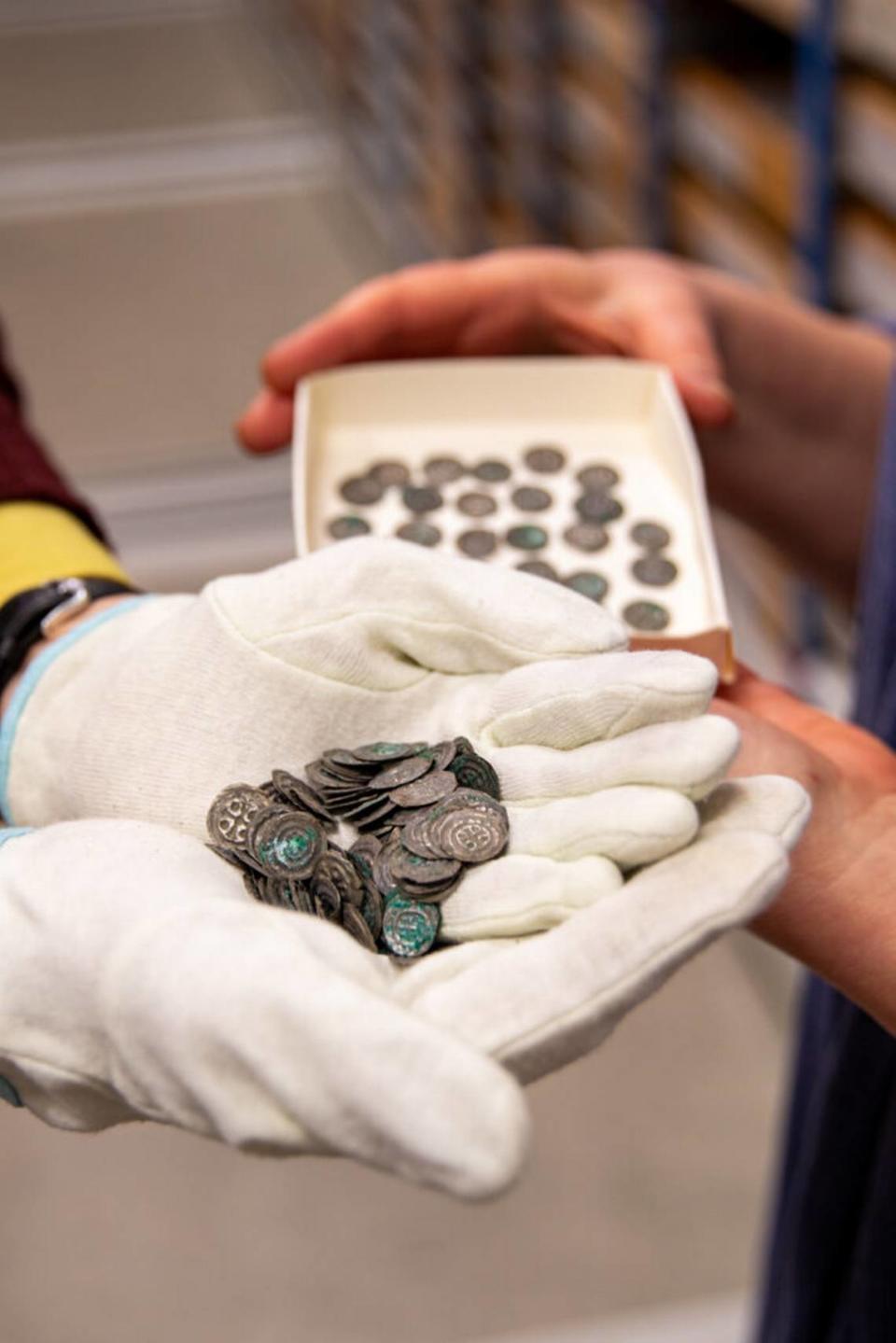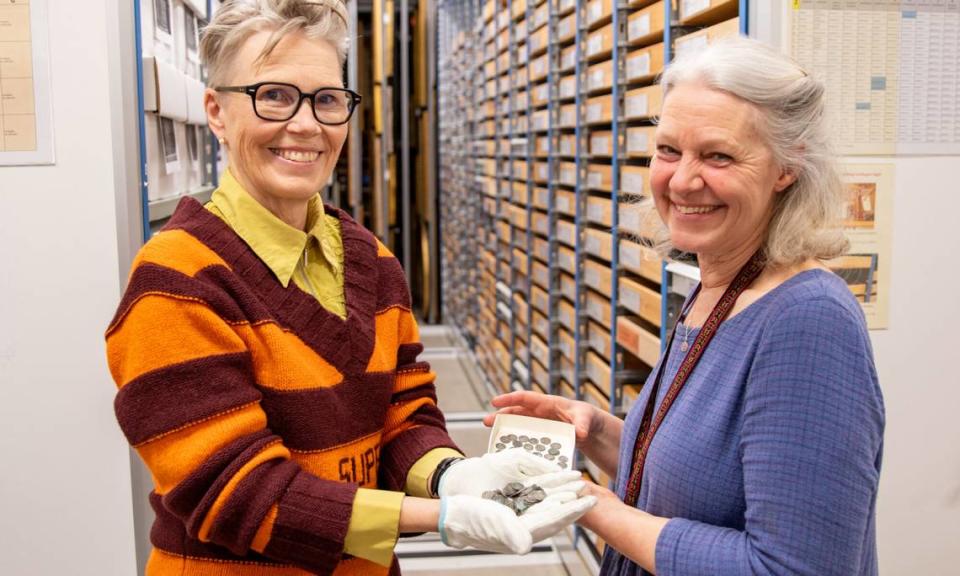Rare 800-year-old silver artifacts found at church in Sweden — and spark a mystery
From a distance, the slate gray roof and central white tower of the Brahekyrkan church appear charming. The idyllic building is situated on a small island in southern Sweden and surrounded by a cemetery dotted with flowers.
So archaeologists weren’t surprised when a construction project at the church uncovered several skeletons — but the grave held an 800-year-old mystery, too.
Archaeologists began excavations at the Brahekyrkan church in Visingsö to prepare for the installation of a geothermal heating system, the Jönköping County Museum said in a March 27 news release.
On the first day of the excavation, the team found two skeletons, Anna Ödéen, an archaeologist with the museum, said in the release. One belonged to a man between 20 and 25 years old, but the other was not identified.
As they cleaned the grave, three silver coins emerged, Ödéen said. Then, more coins surfaced near the skeleton’s left foot.

Uncover more archaeological finds
What are we learning about the past? Here are three of our most eye-catching archaeology stories from the past week.
→ Roman helmet looked like a 'rusty bucket' when it was found in UK. Now, it's restored
→Elaborate 600-year-old castle — complete with moat — unearthed in France. Take a look
→ Mysterious wooden train car — almost 100 years old — unearthed in Belgium, photos show
In total, archaeologists found 170 silver coins dating between 1150 to 1180, the museum said. Photos show the handful of slightly tarnished coins.
Some of the 800-year-old artifacts had completely unknown designs, the museum said. Archaeologists described it as sensational and unique.

Photos shared by the museum in an April 2 Facebook post also show some of the coins. One has an “X”-shaped design surrounded by four dots and a ring. Another looks like a cross between a crown and a bridge.
The find was also rare because Christian graves during the 12th century typically did not include any artifacts, the museum said. The tradition of burying people with objects was common during older, prehistoric eras.
Archaeologists don’t know why the deceased was buried with the rare coins. Excavations at the church and analyses of the coins are ongoing in hopes of solving this mystery.
Visingsö is an island in southern Sweden and about an 180-mile drive southwest from Stockholm.
Google Translate was used to translate the news release from the Jönköping County Museum. Facebook Translate was used to translate the museum’s Facebook post.
Medieval ruins hid much older secret — until now. See the surprising find in Slovakia
Farmer loses plow part in Polish field — then finds historic artifact during search
Elaborate 600-year-old castle — complete with moat — unearthed in France. Take a look


